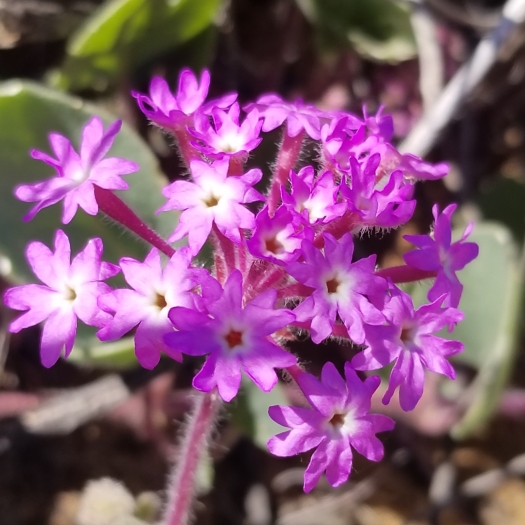Pink Sand Verbena
(Abronia umbellata)
Pink Sand Verbena (Abronia umbellata)
/
/

James Connolly Davis
CC BY-SA 4.0
Image By:
James Connolly Davis
Recorded By:
Copyright:
CC BY-SA 4.0
Copyright Notice:
Photo by: James Connolly Davis | License Type: CC BY-SA 4.0 | License URL: http://creativecommons.org/licenses/by-sa/4.0/ | Rights Holder: James Connolly Davis | Publisher: iNaturalist | Date Created: 2022-03-23T14:15:41-07:00 |

























Estimated Native Range
Summary
Abronia umbellata, commonly known as Pink Sand Verbena, is a perennial herb native to coastal dunes and sandy beaches of western North America, from British Columbia to Baja California. It typically forms low, spreading mats up to 1 foot (30 cm) high and 2 feet (60 cm) wide. The plant is characterized by its thick, succulent leaves that help retain moisture and its clusters of fragrant, pink to magenta flowers that bloom from spring to fall, attracting moths and butterflies. The flowers are especially showy during the evening when they open to release their scent.
Pink Sand Verbena is valued for its ability to stabilize sand dunes and for its ornamental qualities in coastal gardens. It is often used in native plant landscaping, xeriscaping, and as ground cover in seaside conditions. This species prefers full sun and requires well-drained, sandy soil. It is drought-tolerant once established but can benefit from occasional watering during prolonged dry periods. While generally low-maintenance, it can be susceptible to root rot if overwatered or planted in poorly draining soils. In Oregon, it is listed as endangered, and gardeners are encouraged to use nursery-propagated plants rather than collecting from the wild to help conserve natural populations.CC BY-SA 4.0
Pink Sand Verbena is valued for its ability to stabilize sand dunes and for its ornamental qualities in coastal gardens. It is often used in native plant landscaping, xeriscaping, and as ground cover in seaside conditions. This species prefers full sun and requires well-drained, sandy soil. It is drought-tolerant once established but can benefit from occasional watering during prolonged dry periods. While generally low-maintenance, it can be susceptible to root rot if overwatered or planted in poorly draining soils. In Oregon, it is listed as endangered, and gardeners are encouraged to use nursery-propagated plants rather than collecting from the wild to help conserve natural populations.CC BY-SA 4.0
Plant Description
- Plant Type: Succulent
- Height: 0.5-1 feet
- Width: 2-3 feet
- Growth Rate: Moderate
- Flower Color: Pink, Purple
- Flowering Season: Spring, Summer, Fall
- Leaf Retention: Semi-deciduous
Growth Requirements
- Sun: Full Sun
- Water: Low
- Drainage: Fast
Common Uses
Bee Garden, Butterfly Garden, Drought Tolerant, Low Maintenance, Showy Flowers
Natural Habitat
Native to coastal dunes and sandy beaches of western North America
Other Names
Common Names: Beach Sand Verbena, Sand-Verbena
Scientific Names: , Abronia umbellata, Abronia umbellata var. umbellata,
GBIF Accepted Name: